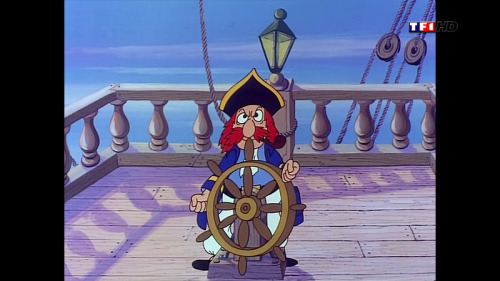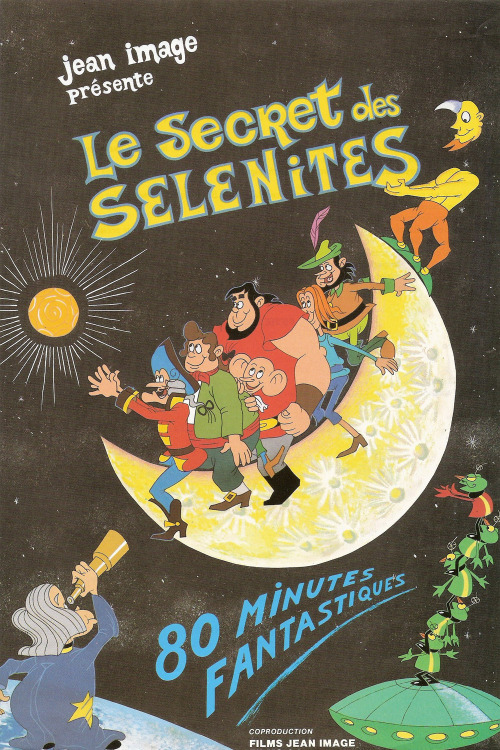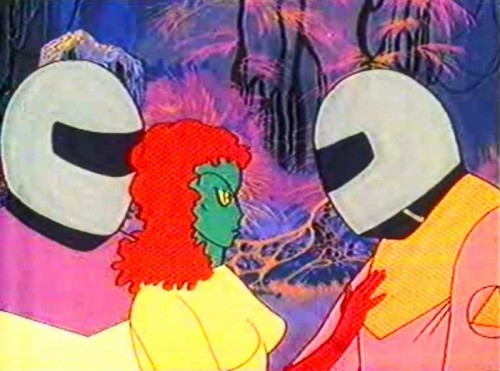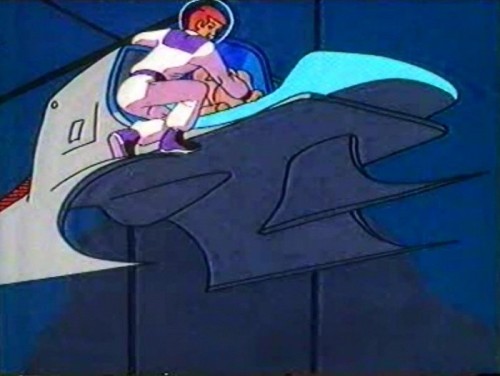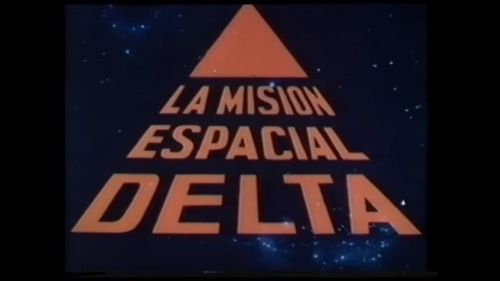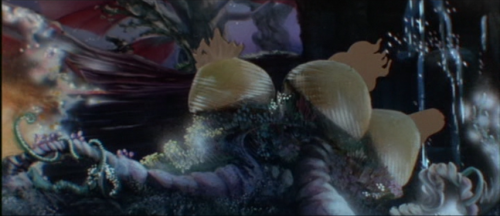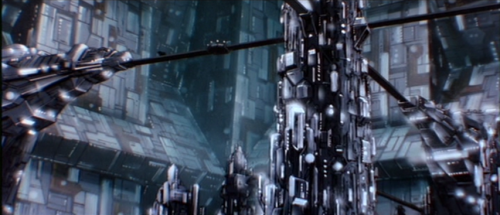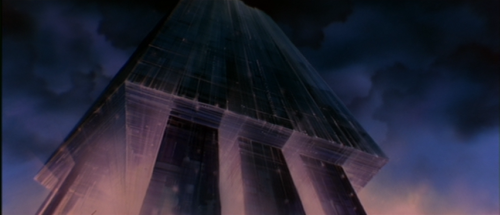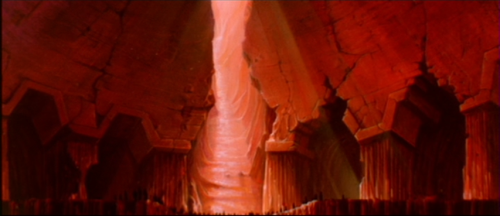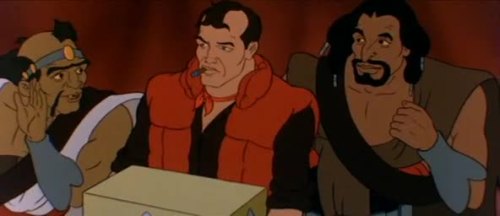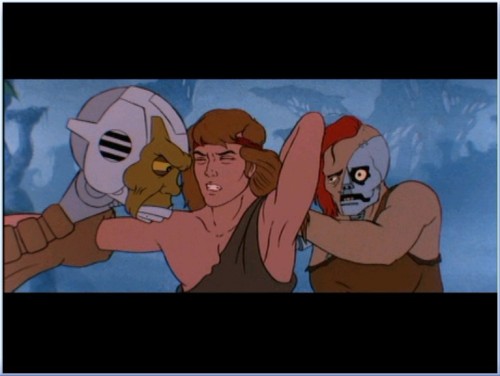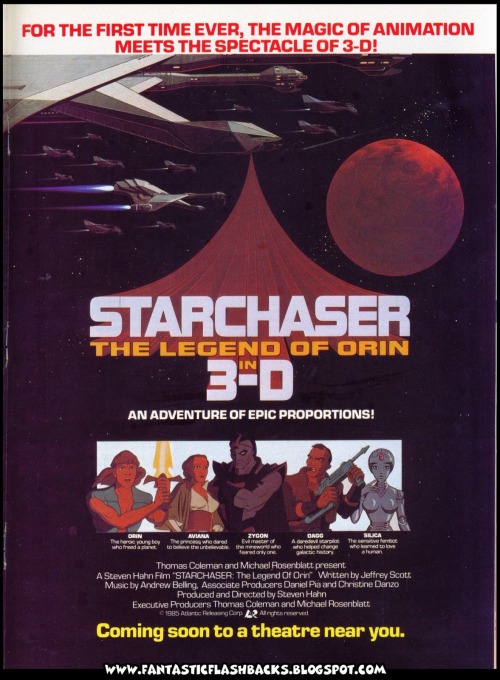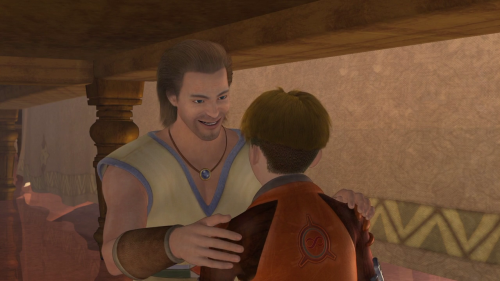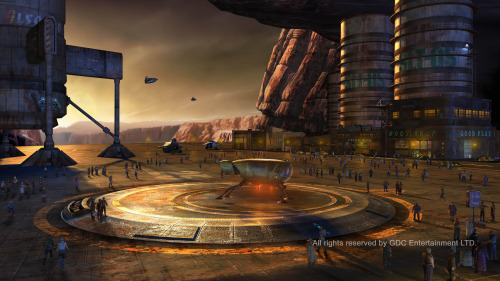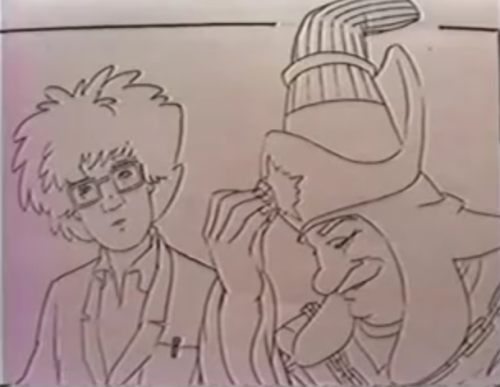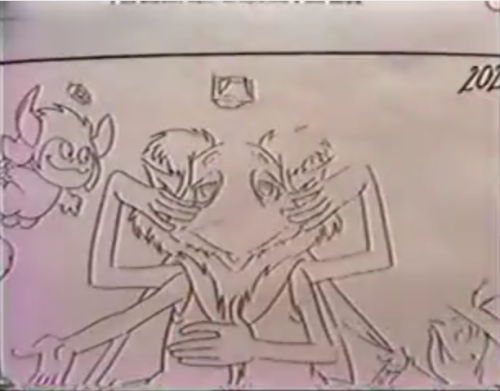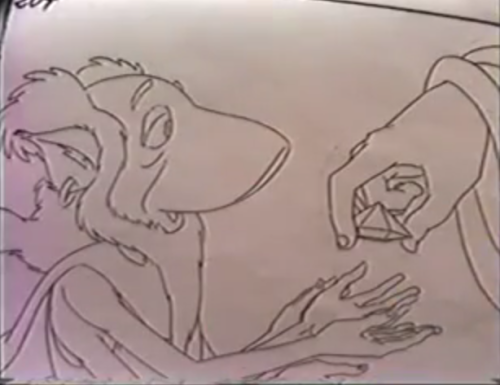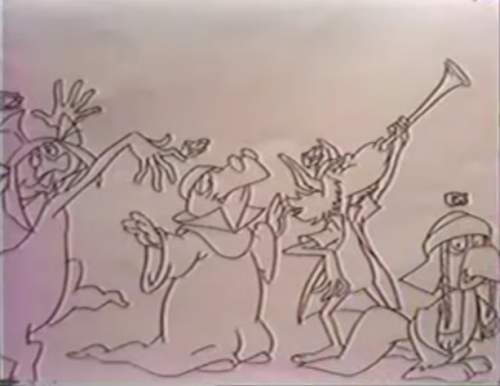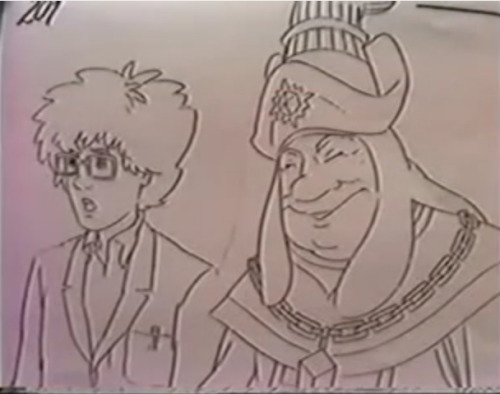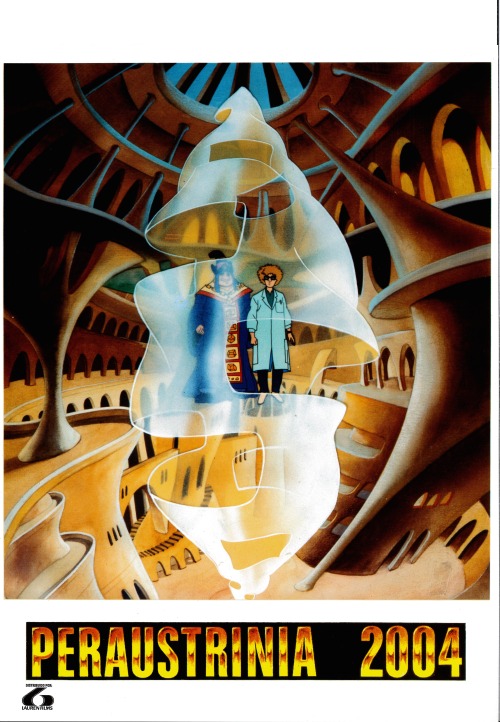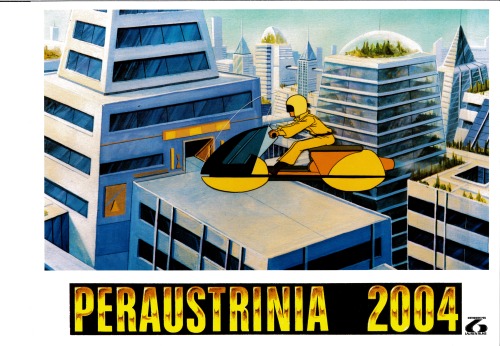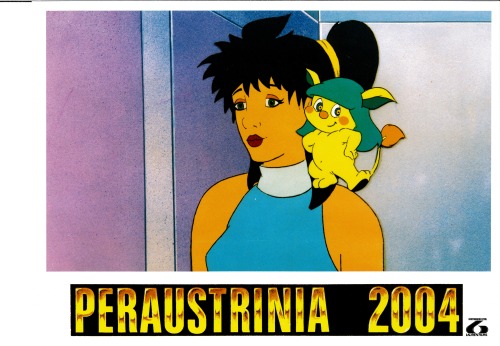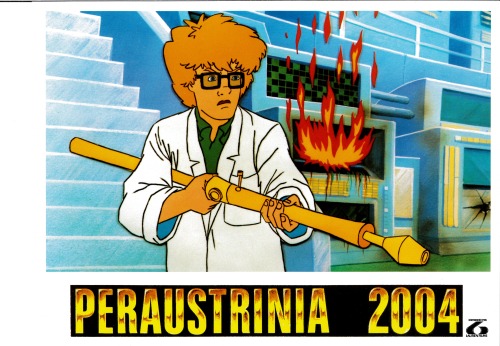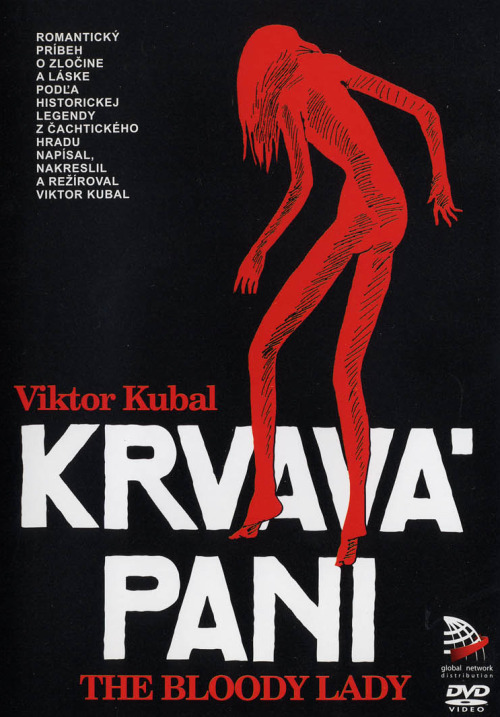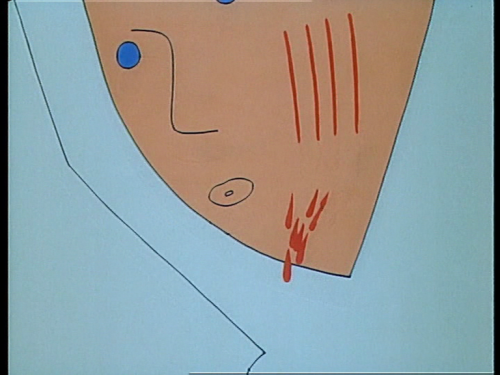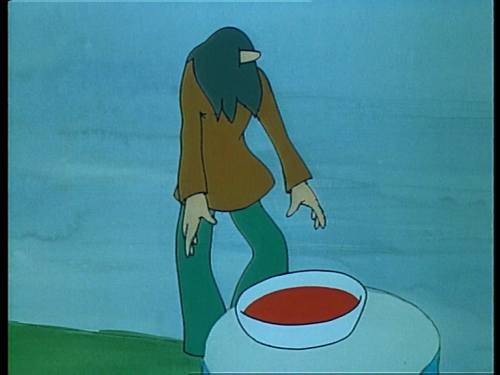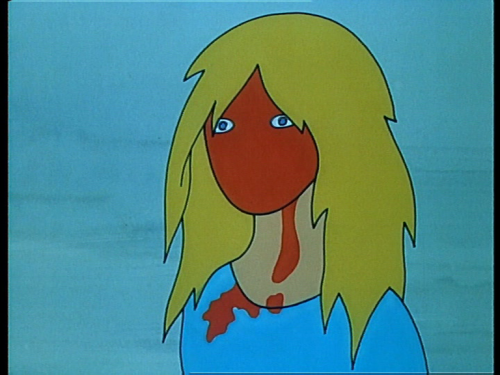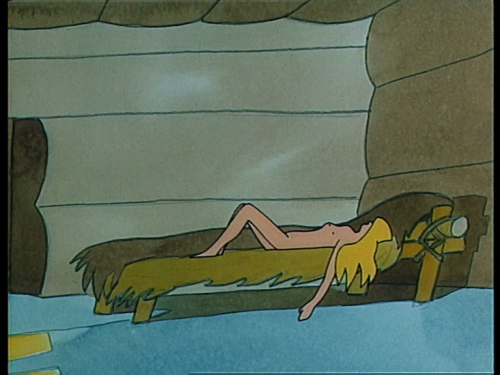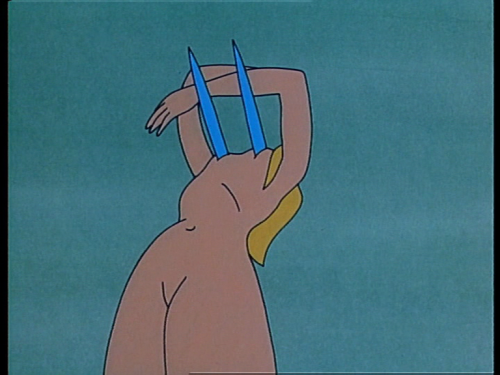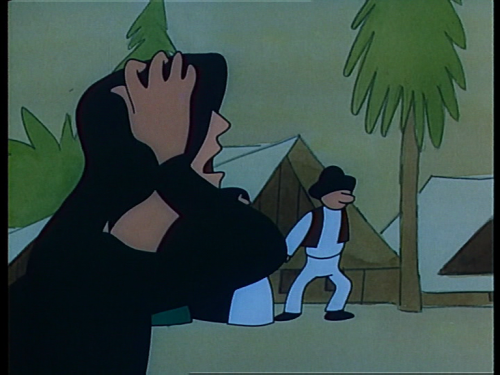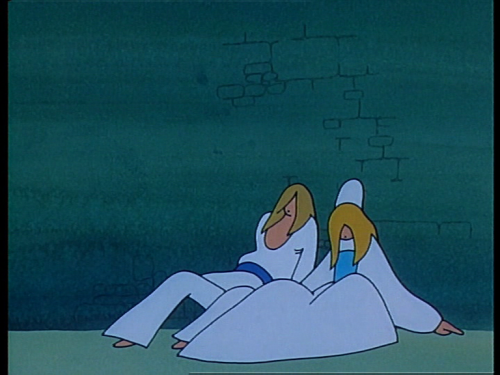#full length
Title:The Secret of the Selenites/Le secret des Sélénites
A French feature-length animated film by Jean Image
Released in 1984
76 Minutes Long
In the depths of the moon lives a mysterious people, the Selenites, who have the ability to live eternally thanks to an invaluable talisman. Baron Munchausen, accompanied by his faithful friends with strange abilities, take off on board a sumptuous boat to the moon in search of the gift immortality.
Post link
Title:The Secret of the Selenites/Le secret des Sélénites
Release Year: 1984
Production Country: France
Film Director: Jean Image
Length:76 Minutes
The film begins in 1787. Baron Munchausen’s Uncle Sirius, an astronomer, stimulates the adventurousness of his nephew. Sirius says that on the moon should live the Selenites, who know the secret of immortality. On a ship upgraded with hot air balloons, Munchausen travels with his friends to the moon and meets not only the friendly Selenites, but also a hostile alien race who also claim the secret of immortality for themselves. Finally, the Baron learns the secret of the Selenites.
Post link
Title:The Secret of the Selenites / Le secret des Sélénites
Release Year: 1984
Production Country: France
Film Director: Jean Image
Length:76 Minutes
Synopsis:
The film follows the adventures of Baron Munchausen, who is prompted to travel to the moon by his Uncle Sirius, an astrologer convinced that it is inhabited by an ancient race called the Selenites. The Selentites incidentally possess the secret of immortality. The Baron takes up his cousin’s offer and travels to the moon using a tall masted ship pulled by three hot air balloons and he is aided by his super-ability friends. When they reach the moon, they are initially placed in jeopardy as their craft lands in a crater and they fall into a subterranean sea inhabited by monsters; however, the Selentites come to rescue them and take them back to their kingdom where they meet the King and Queen of the moon. However, while he is there with his friends, the moon is invaded by the Green Meanies, led by the ostentatious Trivert, who will stop at nothing to get the talisman of eternal life for themselves. They manage to defeat the meanies and they are awarded the talisman for themselves and for Sirius — and they gain the secret of eternal life. The film ends with the Baron and Sirius at the end of the 20th Century, in a futuristic world inhabited by flying cars and skyscrapers reminiscing on their adventures.
Post link
Title:
English:The Secret of the Selenites
French:Le secret des Sélénites
AKA: Moon Madness/Moontrek
Release Year: 1984
Production Country: France
Film Director: Jean Image
Animation/Production Studios: Films Jean Image
Medium: hand-drawn animation
Genre: fantasy, adventure
Length: 76 minutes
Title:
English:Delta Space Mission
Romanian:Misiunea Spatiala Delta
French:La Mission Spatiale Delta
Spanish:Mision Especial Delta
Release Year: 1984
Production Country: Romania
Medium: hand-drawn animation
Genre: sci-fi, space opera
Length:67 minutes
Post link
English:Delta Space Mission
Romanian:Misiunea Spatiala Delta
French:La Mission Spatiale Delta
Spanish: Mision Especial Delta
Released In 1984
67 Minutes Long
This is the first feature-length science fiction animated film made in Romania, a sequel and continuation to a Romanian animated series of the same name directed by Victor Antonescu, with characters drawn by Călin Cazan and Mircea Toia.
Post link
English:Delta Space Mission
Romanian:Misiunea Spatiala Delta
French:La Mission Spatiale Delta
Spanish:Mision Especial Delta
This is the first feature-length science fiction animated film made in Romania, a sequel and continuation to a Romanian animated series of the same name directed by Victor Antonescu, with characters drawn by Călin Cazan and Mircea Toia.
Synopsis:
The year is 3084, man settled interplanetary space, but space is still full of secrets… On a research mission to a newly discovered Galaxy heads the most advanced spaceship, Delta, operated by an extremely powerful electronic brain. Project Delta was conceived in order to establish a dialogue between intergalactic civilizations. Soon after an alien journalist, Alma, was allowed to board the spaceship, she and the captain noticed that the super-brain that controlled the ship could act by itself. No one, however, counts on the fact that this artificial super intelligence will want to explore the area of human emotions and feelings. Eventually, they realize that the journalist’s beauty was the reason for the brain’s odd behavior. She became its muse. The enamored machine becomes out of control and threatens all living things around them.
Directed By: Călin Cazan, Mircea Toia
Country: Romania
Year:1984
Running Time: 67 minutes
Post link
Starchaser: The Legend of Orin (1985)
Starchaser: The Legend of Orin
A United States / South Korea co-production
Released in 1985
This 1985 animated sci-fi adventure film was one of the first full-length animated movies to mix hand drawn and computer generated animation. It was also the second ever animated feature film to be made and released in stereoscopic 3D.
Dick Sebast began as director in 1982 and devised the program for the 3D spaceships before Steven Hahn took over as director. The 3D ships were computer drawn onto paper, then transferred to cels which were inked just like the characters so they fit right in.
The film employed the use of computer vector-based graphics for the vehicles seen throughout that would be plotted out on paper first and then transferred to cels for the final production. The Walt Disney Animation Studio would later use this same technique for the Big Ben sequence in their 1986 animated feature film The Great Mouse Detective.
In many of the scenes, Starchaser featured the use of actual stereo pairs of hand-drawn images and computer-assisted stereography to produce true volumetric roundness that appeared as line art on screen.
Steven Hahn, Director: “I thought that science-fiction worked best when everything seemed real to the audience. That’s the best way to evoke emotion. And the cartoony style of Saturday morning animation wouldn’t have done the job. So I wanted realism as much as possible. It’s much harder to draw realistic characters, but I thought it would render a more emotional experience. And then I thought, if we can create that realistic setting in three-dimensions, it would work even better! So that’s why I decided to do it in 3D. And so, I assembled the crew, including John Sparey as a scene planner in 3D modeling.”
[Sparey worked with Ralph Bakshi on Fritz the CatandFire and Ice.]
Steven Hahn: “He worked on our graphics program for about six months. And later, Bill Kroyer joined the crew in our computer graphics area to fine tune things even further.”
[Bill Kroyer was the CGI artist on Disney’s Tron.]
Steven Hahn: “On Starchaser, we had the first computer graphics program that actually had a pen that could draw in 3D.”
Jeffrey Scott, Screenwriter: “A digital plotter.”
Steven Hahn: “It was the first time in animation!”
Jeffrey Scott: “The ship in Starchaser was created that way. Never been done before.”
Hahn hired computer visual effects artist John Sparey to work out a method to produce hand-drawn computer-assisted stereo pairs of art. After top, bottom, front, and back drawings of objects had been made on graph paper, the drawings were then encoded into a computer so that mathematical structures of the x, y, and z coordinates existed in the computer’s memory. These coordinates could then be used to create and output multiple points of view of the object.
Since the single-strip 3D 35mm film system was used for production, a two-pass system for photographing the cel art was used. One pass was made to record the 2-perf high left eye image on the film. Then a second pass was made to record the 2-perf right eye image. Each 4-perf frame with single-strip 3D contains the alternately stacked left and right eye frames.
The real unsung hero of this project was cameramen who had to do multiple passes for the 3D layers, effects, and adjust them for each eye without mistakes.
Steven Hahn: “All the spatial movements were accomplished with that program. There was no other way we could calculate it correctly.”
Steven Hahn: “We didn’t use any rotoscoping. I was working with Ralph Bakshi as a subcontractor, and he’d made films like Wizards with some rotoscoping. So I got to learn exactly what it actually does on the screen. But there’s no rotoscoping in Starchaser.”
Jeffrey Scott: “That’s what made it so much more difficult to create. Steven’s animators were hand-drawing human characters and getting them to move realistically. It’s the most difficult thing there is because we’ve all seen humans move and know exactly what they’re supposed to look like. There’s no margin for error. But we’ve never seen Porky Pig in real life, so Porky can squash and stretch himself and do all kinds of things and we never question it.”
Produced and directed by Steven Hahn with an international team of animators and technicians, Starchaserwas primarily produced with conventional line art animation using hand-drawn and hand-painted cels. This produced a planar look in 3D similar to much of the art in 3D comic books or View-Master cartoon reels.
Steven Hahn: “Basically, we’re dealing with a 2D medium of cel animation and turning it into 3D. This creates problems well beyond those found in an ordinary 3D live-action feature which employs objects that are already three-dimensional.”
Steven Hahn: “Pre-production and post-production were done here in the United States, and some key scenes in animation, as well. But most of it was animated in Korea. We constantly shipped footage back and forth. It was very difficult, because they’d animate a shot in Korea, and then send it over to the United States, and we’d view it in our screening room in 3D. Well, sometimes it worked correctly, and sometimes it didn’t! So we’d ask them to redo it and the process would continue like that, twice for each shot! Twice because our 35mm film was split across the middle. Top and bottom. Over and under.”
Jeffrey Scott: “Left eye, right eye.”
Steven Hahn: “For 3D, our cameraman would shoot an image for the top half of the film. And then we’d rewind the film and do the same shot again for the bottom half. So our 35mm frame was split horizontally, and it had the same movie on both halves, just slightly different. Sometimes we’d have an effect, like a laser or something, and we’d have to go back and forth twenty times! Because if one frame is off, the 3D just doesn’t work. In the middle of all that, I thought I was crazy. I had, probably, about five million dollars of my own money invested in the film. But the budget turned out to be closer to fourteen-million. I thought it would take six months to complete. It took three years! The execution on my part is nowhere near what I wanted to do, because of the technical difficulties and the size of the production. I had quite a number of people on staff in Korea and quite a number of people here in the United States. At one time I had almost ninety people on payroll!”
John Van Vliet and his Available Light Effects company in North Hollywood handled the two-pass photography for Starchaser.
Vliet: “The camera end of it was sort of a nightmare. The 3D was like doing two films at once because you had to do a left-eye and a right-eye version. But, by the time we finished doing some of the multiple passes it felt like four films!”
Post link
Starchaser: The Legend of Orin · A United States / South Korea co-production
Released in 1985 · Second ever 3D feature-length animated film in history
Running Time: 107 Minutes· Directed By: Steven Hahn
Jeffrey Scott, Screenwriter: “I wrote it as a live-action script. My viewpoint on Starchaser was just to write a good sci-fi epic. I had no consideration that I was writing animation. Basically, I wanted real characters in a live-action story. I pushed the envelope from a kid’s standpoint with a little sexual innuendo, but I didn’t write it just for kids.”
Jeffrey Scott: “There’s a sword-in-the-stone element to it. But you know, these are the archetypical things that are just there so that people can better identify with them. When I was developing the plot, I wasn’t looking at any of those things individually and trying to work them in. My initial concept was, what would it be like to live under ground where the ceiling was so low that you could never stand up fully? That was my first idea. What kind of existence would that be? From there, I built all the rest. How would you find your way out? Well, you’d dig something up! My favorite line in the movie is: ‘Never dig up, because up is Hell!’ So I just reversed our own, standard religious viewpoint. I didn’t set out to add any specific Bible imagery. I was just trying to tell a story. And at the climax, when the glowing figures arrive, what I was really saying was that we’re all spiritual beings. The scene where Orin heals his brother’s blindness was a similar thing. It was a way to show that there’s something going on beyond the physical realm. I admit it was a stretch. If I was to write the script today, I don’t know if I’d make his blind brother see again.”
Steven Hahn, Director: “I thought that science-fiction worked best when everything seemed real to the audience. That’s the best way to evoke emotion. And the cartoony style of Saturday morning animation wouldn’t have done the job. So I wanted realism as much as possible. It’s much harder to draw realistic characters, but I thought it would render a more emotional experience. We didn’t use any rotoscoping. There’s no rotoscoping in Starchaser.”
Jeffrey Scott: “That’s what made it so much more difficult to create. Steven’s animators were hand-drawing human characters and getting them to move realistically. It’s the most difficult thing there is because we’ve all seen humans move and know exactly what they’re supposed to look like. There was no margin for error.”
Post link
Starchaser: The Legend of Orin · A United States / South Korea co-production
Released in 1985 · Second ever 3D feature-length animated film in history
Synopsis:
Set in the deep underground Mine-World, a tribe of human workers are treated like slaves under the power of the evil overlord Zygon, whom they believe to be their god. These slave workers have lived underground for millennia mining crystals for the malevolent Zygon. They have been told for centuries that their world is the only world and any attempt to mine to the surface will only lead them to Hell. Until one day while mining, one of this band of worker-slaves, Orin, discovers and unearths the hilt of a mythical sword with powers only he can unlock and master. The sword issues a message urging Orin to journey to the surface, saying that if he can find the blade of the sword he can set his people free. Upon escaping to the surface of this planet, Trinia, he runs into the rogue smuggler Dagg and a pair of helpful droids and the Princess of Trinia, Aviana. Orin teams up with the reluctant smuggler Dagg and his ship, Starchaser, to search for the sword’s blade. Once all teamed up, they plan to return to the subterranean Mine-World to defeat Zygon and free Orin’s enslaved people.
Post link
Title:Starchaser: The Legend of Orin
Release Year: 1985
Production Country: United States, South Korea (Pre-production and post-production were done here in the United States, and some key scenes in animation, as well. But most of it was animated in Korea.)
Film Director: Steven Hahn
Animation Studios: Young Sung Production Co. Ltd., Steven Hahn Productions, Filmation
Medium: 90% hand drawn / hand-painted cel animation, 10% vector-based computer generated graphics. Starchaserwas the second 3D feature-length animated film in history. The film featured the use of actual stereo pairs of the hand drawn images, which the cameramen had to do multiple passes for the 3D layers. Since the single-strip 3D 35mm film system was used for production, a two-pass system for photographing the cel art was used. One pass was made to record the 2-perf high left eye image on the film. Then a second pass was made to record the 2-perf right eye image. Each 4-perf frame with single-strip 3D contains the alternately stacked left and right eye frames. The film was a stereoscopic 3D production, shot in 2.35:1 widescreen.
Genre: sci-fi, adventure
Length: 107 minutes
Thru the Moebius Strip (2005)
Directed By Glenn Chaika
Designed by Jean “Moebius” Giraud
Produced in France and China
Approximate Run Time: 87 minutes
Post link
“Thru the Moebius Strip is a fast-paced science fiction and fantasy action adventure set in the distant future and across two worlds. The intergalactic story is based upon more than 400 sketches by renowned French comics artist Jean “Moebius” Giraud, who personally supervised the entire production from Paris. The legendary French graphic novelist and veteran Hollywood concept artist Giraud broke new ground in comic art in the 1970s. FernGully scribe James Cox wrote the script.
____________________________________________
Synopsis: Jac Weir — a troubled yet highly intelligent fourteen-year-old — searches for answers about the disappearance of his father eight years ago. Simon disappeared soon after successfully activating his technological marvel named the Mobius Field Portal. The portal is a scientific breakthrough that distorts space itself, allowing the crossing of great distances instantly.
Jac’s daily life on the family’s dusty space farm is changed forever when his questions are answered in a flash of blinding light. With the aid of science and magic of an alien civilization, Jac is contacted by the father he barely knows.
Simon Weir has become lost and trapped in the space-time portal he created, and his son Jac must search for him through a myriad number of planets, filled with wondrous sights and often gigantic beings. Jac, a brave, resourceful 14 year-old boy, crosses over to the Planet Raphicca, 27.2 million light years away. Jac discovers that his father is prisoner in a kingdom of giant aliens who believe in magic and a medieval code of chivalry. Once he finds his father, Jac discovers that part of the rescue process is going to involve helping his father’s giant alien friend regain the throne.
In the midst of a raging battle between good and evil, Jac rescues his father, his newfound family of aliens, the planet of Raphicca, and ultimately, the universe.
Thru the Moebius Strip is the story of a young man’s journey through foreign worlds in search of something important to him unlike any other. Fourteen-year-old Jac is a rebellious and somewhat stubborn young man, unwilling to accept the sudden loss of his father. Jac’s determination and undying affection are what guide him all over the universe in search of his father. Thru the Moebius Strip follows Jac’s expedition to rescue his father from the clutches of giant medieval aliens, and the voyage the two must subsequently begin in order to return to their home, 27.2 million light years away.
Jac will make new friends, make new enemies, and come to learn more about himself through his journey around the universe than he ever expected.
____________________________________________
Science fiction animation fans may find Thru the Moebius Strip an intriguing film due to its outstanding conceptual artwork from Jean Giraud, and due also in part to the CG film’s confident animation. “Moebius” being one of his pseudonyms, Giraud creatively incorporates the Mobius Strip in the story as a space-time tunnel, which enables Jac, the 14-year-old hero, to rescue his physicist father, Simon Weir, and conquer the evil emperor on the alien planet.
Bringing Hollywood firepower to the table is veteran screenwriter Jim Cox, a Disney pro whose credits include writing “FernGully.”
Mark Hamill, who plays the famous role of Luke Skywalker in the “Star Wars” series, lent his voice to the production, playing Jac’s father in the English version.
In addition, some Oriental elements such as Kung Fu and traditional costume and music have been added to give the epic film a little Chinese feel.”
Post link
Title: Thru the Moebius Strip [French Title: Le Ruban de Moebius]
Release Year: 2005
Production Country: France, China
Film Director: Glenn Chaika
Animation Studio: GDC Entertainment Ltd.
Medium: computer generated
Genre: sci-fi, adventure
Length: 87 minutes
Concept art and character sketches from the 1990 Catalan feature-length animated film, Peraustrínia 2004.
Post link
Ten of the original dozen Peraustrínia 2004 lobby cards that would have been posted in cinemas in 1990 to promote the film. Displaying still images from the feature-length Catalan animated film.
Post link
Peraustrínia 2004 (1990): “The plot is set in the future, in 2004, and takes place in a fictional European country called Peraustrínia which is entirely devoted to science and technology. There is even the technology to end wars and poverty. However, chance and imagination are in danger of disappearing. The inhabitants of another country, the Empire of Chance, are mischievous mutant creatures in a constant state of metamorphosis, doing their best to sow and create chaos for humans. But a young scientist, Tristán, has developed a technology that seems to allow him to fully control chance. Everything is under such order, that even the news predicts the future. The Empire of Chance is in great danger. But one thing still escapes the control of Tristán: love. Love is the only thing that Tristán cannot control. Thus, the love of Priscilla the Princess eludes Tristán. The Emperor of Chance provides Tristán with an ultimatum: if Tristán helps prevent the loss of Chance, the Emperor will help Tristán to be loved by Priscilla.
Peraustrínia — where progress and technology have made the end of poverty and wars possible, but the highly-ordered world endangers chance and imagination.”
Post link
Title: Peraustrínia 2004
Release Year: 1990
Production Country: Catalonia
Film Director: Ángel García
Animation Studio: Fermín Marimón Producciones Cinematográficas
Medium: hand-drawn animation (classical)
Genre: sci-fi, fantasy
DVD Cover for Krvavá pani/The Bloody Lady, a 1980 Slovokian animated feature written, directed, and animated by Viktor Kubal.
The film is based on the legend of Countess Elizabeth Báthory, who is alleged to have bathed in the blood of hundreds of virgin girls to maintain eternal youth and beautiful skin, making her the most prolific female serial killer in history.
The film contains no dialogue, only a musical score.
Post link
The Bloody Lady(1980)
By Viktor Kubal
Produced in Czechoslovakia
Approximate Run Time: 72 minutes
Post link







